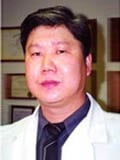
Yi’s Acupuncture & Herbal Clinic
4216 Evergreen Lane
Suite 112
Annandale, VA 22003

More Mental Health Articles
Lou Gehrig's Disease, ALS
Treatment With Oriental Medicine and Acupuncture
Due to the interest in better health and the many options and alternatives available, patients and their families maintain a continued interest in Oriental medicine, which is becoming more accessible every year in the U.S.
Although practitioner experience with amyotrophic lateral sclerosis, (ALS, a.k.a. Lou Gehrig's disease) has been limited due to the rareness of the disease, a few doctors of Oriental medicine specialize in treating ALS and provide alternative treatment remedies.
ALS is a rare degenerative disorder of the central nervous system, which leads to weakening and wasting of the muscles. The disease manifests differently among individuals, but eventually all four limbs become involved.
There may be considerable cramping, stiffness, and partial loss of nervous control over the muscles, until respiration is affected, usually within about five years, causing death. There is about a 5% rate of survival past 12 years; some people live more than 20 years; and others have rapid disease progression within just two years.
Based on my research, Oriental medicine and acupuncture are thought to influence physiological functions via the nervous system, in particular by promoting blood circulation.
Head (scalp) acupuncture is typically applied in the treatment of stroke, but, in my research, it has shown some promising results in the treatment of degenerative neurological diseases such as ALS.
The head acupuncture technique is best applied while movement is still close to normal, as the effects are most dramatic when the person moves the affected body parts while the head needles are being manipulated. Many acupuncturists in the U.S. have learned this method of treatment and can administer it locally.
The research results were classified into four categories
Clinical remission, where atrophic muscles were largely restored, the patient then being able to manage daily activities and take part in social activities, or being able to survive with the disease more than fifteen years after diagnosis.
Markedly effective, where the ability to manage daily activities was enhanced somewhat, or being able to survive more than ten years after diagnosis.
Fairly effective, where muscular atrophy slows down, with survival over five years.
Ineffective, where symptoms do not significantly improve with survival less than three years.
Of the 36 patients studied, a surprising number, 14, appeared to have clinical remission; for 8, the treatment was still markedly effective; for 11 it was fairly effective, and for 3 it was ineffective.
If you are, or someone you know is, faced with ALS, this may be an alternative you should consider.
Other Articles You May Find of Interest...
- Embracing Healing: Navigating the Emotional and Physical Journey of Mastectomy Recovery
- Understanding the Role of Support Groups in Personal Development
- Ways To Check On a ‘Mama’ In Your Life
- How to get rid of stress
- The Impact Of Mental Illness
- Healthy Mind In a Healthy Body
- 10 Summer Bucket List Ideas For 2024

















